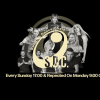-
 play_arrow
play_arrow
Clubalicious Clubalicious Radio
-
 play_arrow
play_arrow
London Calling Podcast Yana Bolder

“When I was young, it seemed that life was so wonderful…” That’s the memorable opening line of Supertramp’s “The Logical Song,” an ode to the forgotten simple joys of life that managed to embody the British band in a mere four minutes. Over an insistent electric piano rhythm, Roger Hodgson sang his distinctive, high tenor vocal that urged listeners to reevaluate the way they looked at life. The crystalline production of the song was almost as important as its writing, arrangement and performance. Supertramp, like Pink Floyd, were known as an audiophile’s band, and they produced records that salesmen would use to demonstrate stereo systems and young men would in turn use to show off car speakers. Their brand of progressive pop music was the perfect fit for musical climate of the late ’70s and early ’80s.
The origin of Supertramp began with the unusual arrangement: Swiss millionaire music fan Stanley August Miesegaes agreed to finance keyboardist/vocalist Rick Davies’ vision for a band. Davies held auditions to recruit suitable musicians and soon settled on the lineup of Richard Palmer (guitar), Bob Miller (drums), and Roger Hodgson (vocals/bass). The group was originally called Daddy, until Palmer convinced them to change it to Supertramp, after the 1910 book Autobiography of a Supertramp by R. H. Davies. Hodgson and Davies quickly became the creative force of the band, and they agreed to an equal split of the songwriting royalties (a la Lennon/McCartney). The band’s first two albums, Supertramp (1970) and Indelibly Stamped (1971), were undistinguished affairs, their main feature being long-winded soloing common at the time. After Indelibly Stamped was released, Miesegaes decided to pull the plug and severed his involvement with the group. By this time, members Palmer and Miller had departed and were replaced by Kevin Currie (drums), Frank Farrell (bass; Hodgson had moved to guitar and keyboards) and Dave Winthrop (saxophone). Without financial support, the band began to truly pay their dues and slogged through poverty and awful gigs. In fact, it got so bad that Farrell, Winthrop and Currie all left, and new members Dougie Thomson (bass), Bob Siebenberg (drums) and John Helliwell (woodwinds) joined the band. This lineup proved to be their most stable, and Supertramp’s sound began to change, out of necessity, to more commercial pop music.
The group’s next album, Crime of the Century, was a hit featuring the singles “Dreamer” and “Bloody Well Right.” Additionally, the sound of the band was transformed by producer Ken Scott and Russel Pope (their concert sound engineer) into the lush but precise approach that it became justifiably famous for. Crime of the Century also began an intense work cycle for Supertramp of spending months carefully crafting a sonic masterpiece in the studio and then embarking on huge tours of the world. However, the following albums Crisis? What Crisis? and Even in the Quietest Moments weren’t as artistically or commercially successful as Crime of the Century. After the long tour to support Even in the Quietest Moments, the tired group agreed to take a well-deserved break before working on their next project.
“The Logical Song” was written by Hodgson during this period and, as he relates, was a very personal lyric for him: “You can’t preach to people, but you can stimulate their thoughts, and I think that this song does do that. I hate to use the word ‘message,’ but the thought here is that throughout childhood you are told so many things, and yet you are never told who you really are; you are not told anything about your real self. Very rarely, anyway. We are taught how to function outwardly, but not told who we are inwardly, and no one explains it to us.”
When Supertramp regrouped, it was decided that the band would rehearse and demo the album with a mobile recording at their rehearsal space in Burbank, Calif. They worked on the arrangements and recorded the songs on eight tracks and even determined the running order. After demoing the album, they moved to the Village Recorder to begin the actual recording. The sessions were done in Studio B, which featured a Harrison console and two Ampex 1200 24-tracks. The standard procedure was to record the backing track and make a slave, bounce down the backing track from 10 tracks of drums on the first machine to four on the second, and so on. They would then put them away until they mixed. Surprisingly, the backing track consisted of quite a few instruments: Wurlitzer electric piano, drums, bass, saxophone and Clavinet (later mixed out). As producer/engineer Peter Henderson recalls, “We were really trying to get performances out of the backing track. So we would go for as much as we could get, and then we’d always keep the main keyboard, bass and drums and then replace whatever we needed to. In this particular case, the sax solo was all live with the backing track, and the vocal at the end section was kept as well.”
Hodgson played the Wurlitzer; signal was taken as a DI and then split through a Boss chorus pedal to give it that half-straight and half-modulated chorus sound. Helliwell remembers the electric piano part as being a good example of Hodgson’s style: “We call him ‘Hammerhands,’ because he’s got pretty big hands and he really whacks the keys. Roger has never had any lessons at all, and he doesn’t care about technique or anything like that; he just gets the sounds he wants out of it.”
The synthesized strings were a combination of an Oberheim 4 voice (for the low cello sounds) and an Elka Rhapsody string ensemble, which was also put through the Boss chorus pedal (for the high parts). The Hammond organ’s Leslie was miked with two Neumann U47s on the top and one on the bottom, then compressed through two UREI 1176s. The arpeggiated guitar part was two double-tracked Guild 12-strings combined with two Les Paul electric guitars fed through Leslies (both left and right). The guitar amps were miked with Neumann U87s. The bass was pure DI with a lot of EQ on it. Henderson remembers that Thomson “used to play with flat-wound strings, and the Harrison always had a really nice low end, even though the EQ wasn’t very good on that desk. It probably had as much as +12 dB at 100 and 200. [The bass] had an awful lot of low end to it, and it, too, was put through an 1176.”
Classic Tracks: Midnight Oil’s “Beds Are Burning”
The saxophone was recorded with an STC 4038 (an English ribbon mic) in the bell and a U87 a couple of feet away for an overall sound. Because they recorded the backing live, there was concern about bleed from the saxophone. As Henderson relates, “At the time in the Village, there was only one booth, and Roger was singing live in it, so John was recorded in the toilet; he was playing the solo in the toilet. He used to complain about it a lot, but I think he was actually quite happy being in there.”
The percussion intro for the song was a montage that had to be assembled. Siebenberg hit a very small cymbal and played the castanets, and Helliwell provided the heavy breathing. Actually, the main stumbling block for this part of the piece was that it took some time for Siebenberg to learn how to play the castanets correctly.
The band also had some fun with the end section of the song, piling on overdubs of wah-wah Clavinet, timbales, cowbell and a Mattel digital football game sound (after the “d-d-digital” line, of course). The game belonged to an engineer who was working in the other studio (who, Henderson jokes, “is still waiting for his royalty check for its use”).
As was common in late ’70s recordings, they spent a few days selecting the right drums and tuning them-Siebenberg ended up playing a Ludwig kit and used Fiberskins on the toms. Henderson recalls, “I’m not sure I’ve ever used this combination of mics again, actually. The snare [mic] was a KM84, which was trying to do what Alan Parsons was doing at the time with Dark Side of the Moon-it’s a very soft sound, but a very hi-fi sound, and that’s what we were going for. The kick would have been a 421 Sennheiser, and all the toms as well. The hi-hats would have been the 84s again, and the overheads were 451s, which I certainly wouldn’t use again, but I think they helped the tom sound.”
The lead vocals were cut with U47s and recorded through an 1176, as well. Henderson says he would normally have used a Fairchild on vocals during that era, but they didn’t have one at the Village. He observes that the vocals were done without a pop shield, very close to the microphone, which caused some grief, but gave them the proximity effect they were looking for. Hodgson frequently did double-tracking for his lead vocal lines and also did backing harmony vocals. Davies’ counter vocal on the track was recorded late in the process; as Henderson remembers, “That was something that didn’t appear until probably seven months into recording. Roger was very, very pleased with that, because he was always looking for something to lift it, and Rick came in with that idea.”
As is often the case in a long-term recording project, Supertramp found themselves with almost too much choice in the mixdown stage. Siebenberg remembers, “The album went pretty smoothly until we got into mixing, and then we ran into the problem of who was going to decide when we had the final mix of the LP. It was just a case of too many cooks. We were pulling our hair out because we couldn’t decide.”
One thing they could agree on was that they should mix the record somewhere other than the Village. As Henderson explains, “We got to the end of seven months, and we tried to mix it at the Village, and we found the Harrison EQ to be very harsh-sounding, so you couldn’t brighten anything up without it sounding very electronic. We made a decision to go to Crystal, which had a custom desk. And that was quite a lucky break for us. But when you’ve worked on something for quite a time, it’s hard, because over that period of months you hear something in your head and you’re trying to get back to that point. You often drive yourself crazy, and we probably mixed each song three times. During the last three days of the album, there was a lot of pressure to finish. And on the last day, we remixed four songs again and went straight from working all night to mastering.”
The long hours and the hard work paid off. “The Logical Song” became one of the fastest breaking singles in A&M’s history and helped propel the band into superstardom. It reached Number Six on the Billboard singles chart and remains a classic rock radio staple to this day. Breakfast in America was the high-water mark for Supertramp, spawning four hit singles and going on to sell 18 million copies worldwide. Siebenberg says he had no doubts about the album’s success: He bet Davies $100 that it would break the Top 10. In fact, it was Number One for six weeks. Davies was undoubtedly happy to lose the bet; however, he framed the Ben Franklin with a plaque reading: “You’d better not spend it, you rat!” Henderson was honored by his peers with the well-deserved Grammy for the best engineered album of 1979.
Unfortunately, all was not well with the band. Tensions within the group began to flare up during the Breakfast tour, and after its follow-up, …famous last words…, Hodgson left the band to pursue a solo career. Davies was left to helm Supertramp, and the band continues to release albums and tour, although they have never again reached the exalted heights of ’78-’82.
This article was first posted in June, 2000.
Written by: Admin
Similar posts
Recent Posts
- 🎶 New Music: JID, OneRepublic, Morgan Wallen, Post Malone, MarkCutz, Kidd Spin + More!
- Classic Tracks: The Fireballs’ “Sugar Shack”
- Classic Tracks: Arlo Guthrie’s “City of New Orleans”
- Classic Track: k.d. lang’s “Constant Craving”
- Classic Tracks: Waylon Jennings’ “Are You Sure Hank Done It This Way”
Recent Comments
No comments to show.Featured post

Latest posts

🎶 New Music: JID, OneRepublic, Morgan Wallen, Post Malone, MarkCutz, Kidd Spin + More!

Classic Tracks: The Fireballs’ “Sugar Shack”

Classic Tracks: Arlo Guthrie’s “City of New Orleans”

Classic Track: k.d. lang’s “Constant Craving”

Classic Tracks: Waylon Jennings’ “Are You Sure Hank Done It This Way”
Current show
Upcoming shows

The House Crunch
Terri B
00:00 - 01:00
In Session
Sister Bliss
01:00 - 02:00
Fresh Is Fresh
This Weeks Hottest Releases
02:00 - 09:00
Swedish Dance Chart
09:00 - 11:00

Fresh Is Fresh
This Weeks Hottest Releases
11:00 - 16:00Chart
Powered by Dee jay promotions visit us








 Invalid license, for more info click here
Invalid license, for more info click here